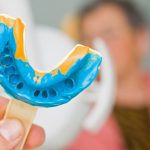
As digital technology within dentistry improves, digital workflows are becoming increasingly common. Manufacturers of digital dental technology often argue that their products not only reduce working time and costs but also improve patient satisfaction.
A new systematic review has addressed some of these claims. The aim of the study was to compare working times for digital versus conventional impressions. The study also examined patient centred outcomes such as comfort and acceptance of the procedure.
Methods
Searches were conducted of the Medline, Cochrane, Science Direct, Scopus, and Embase databases. Additional hand searches were carried out. All published papers available on the databases from 1955 to July 2016 were considered for title and abstract analysis. The review was carried out using PRISMA guidelines and the review was registered with PROSPERO.
Two reviewers carried out the searches using a modified Newcastle-Ottawa scale to assess the quality of the included studies and the risk of bias. Studies would be included if they were clinical studies (prospective, retrospective, or RCTs); studies related to digital implants or tooth impressions and studies comparing patient centred outcomes and procedure working time with a digital versus conventional technique.
Results
- 5 studies involving a total of 155 patients met the inclusion criteria.
- 2 RCTs examined patient outcomes and working time in tooth supported prosthetics
- 3 studies examined implant supported prosthetics
- 3 studies reported reduced working time for digital impressions and 2 reported less time for conventional impressions
- 4 studies reported that digital impressions had improved comfort, and reduced nausea and anxiety when compared to conventional impressions.
- 1 study reported no difference for patient centered outcomes between impression methodologies.
Conclusions
The authors concluded: –
- The time efficiency was similar for both digital and conventional impression techniques.
- Patients showed greater preference for the digital impression over the conventional impression technique.
Comments
This is a well-designed and executed systematic review. The approach used to include and exclude studies was well described and logical in its approach. The risk of bias within the underlying studies is described in detail. The included RCTs are judged to be at high risk of bias due to a lack of blinding. The authors admit that the limited number of studies available prevent the drawing of any firm conclusions at this time. A failing within the literature is the lack of agreed protocols on when to start timing how long an impression takes. Until this crucial aspect of study design is standardised it will be hard to compare digital and conventional impression working times. The use of patient reported outcome measures is increasing. Clinically the paper finds that while it is not clear if there are large time savings available to practitioners, patients have a preference for digital impressions.
Links
Primary Paper
Gallardo YR, Bohner L, Tortamano P, Pigozzo MN, Laganá DC, Sesma N. Patient outcomes and procedure working time for digital versus conventional impressions: A systematic review. J Prosthet Dent. 2017 Sep 27. pii: S0022-3913(17)30498-5. doi: 10.1016/j.prosdent.2017.07.007. [Epub ahead of print] Review. PubMed PMID:28967407.
Other references
Dental Elf – 16 Jun 2016
